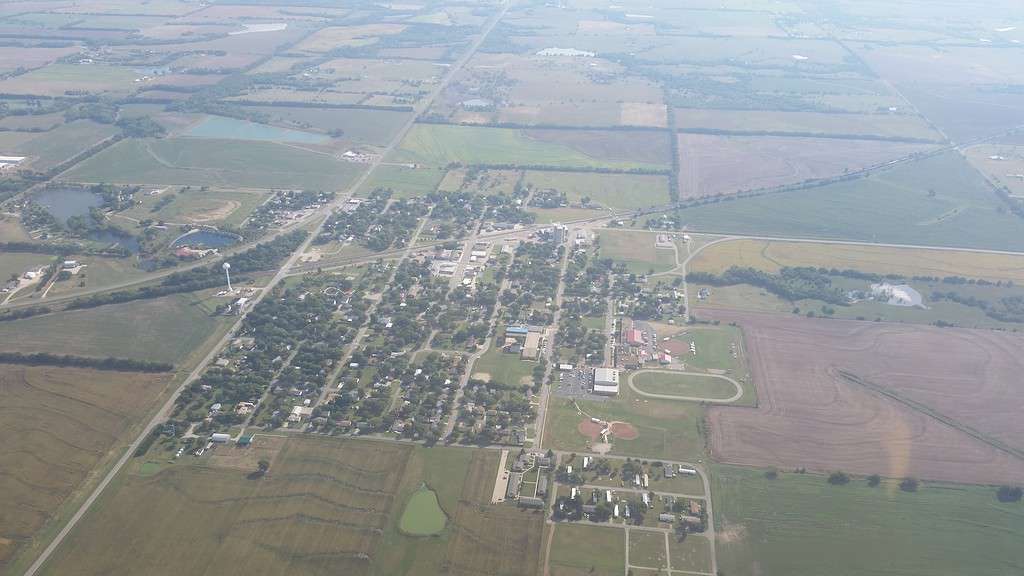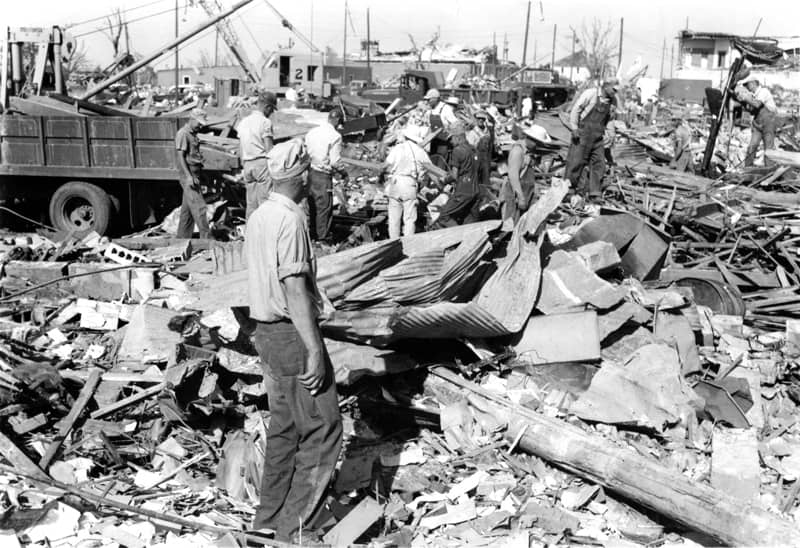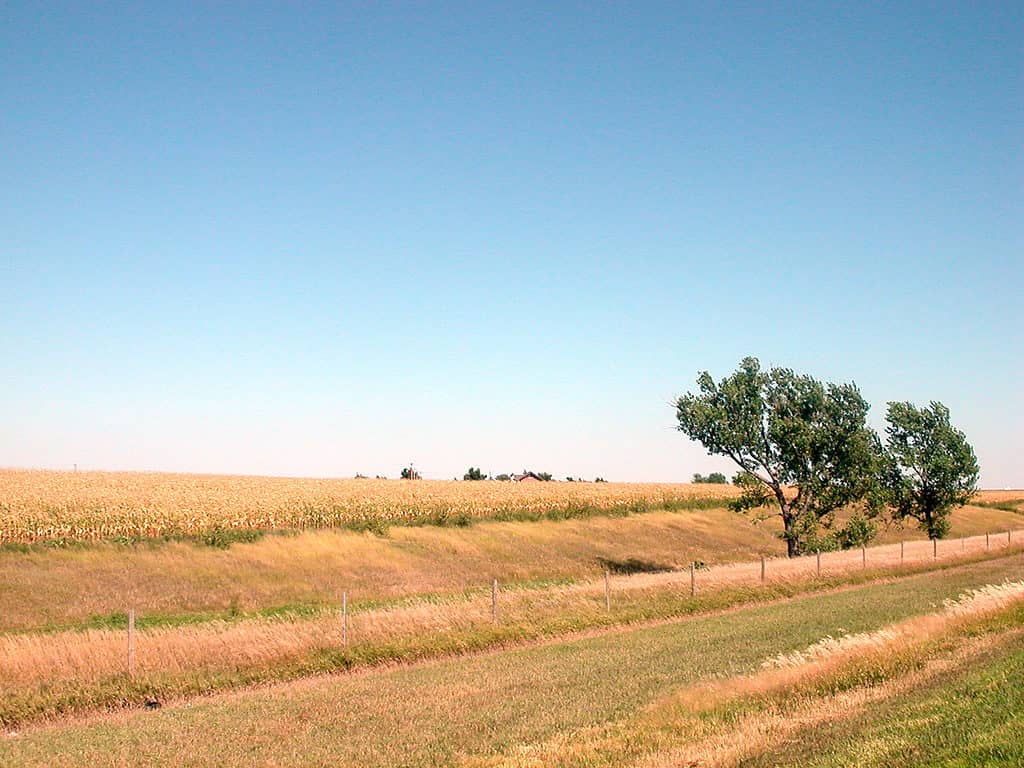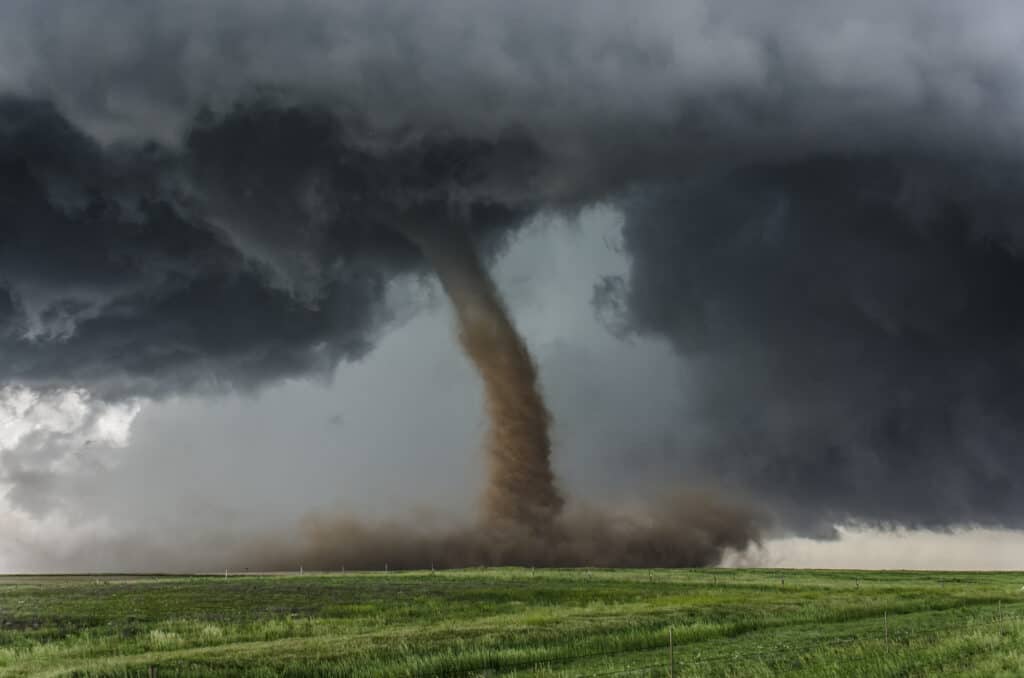Kansas, known as the heart of Tornado Alley, has seen its fair share of tornadoes. The state’s flat topography and location in the central United States make it a prime target for severe weather and tornadoes. This blog post will look at the strongest tornado ever documented in Kansas. We’ll examine how it affected the communities and wildlife in the areas it struck. We’ll also discuss the impact of tornadoes on ecosystems and the animals that inhabit them. So get ready to join us on a fast-paced journey through Kansas’ history-making tornado!
The Udall Tornado: Kansas’ Deadliest Twister
In 1955, on the night of May 25, a destructive tornado hit Udall, Kansas, causing devastation and loss. This event is known as the Udall Tornado. It is the most deadly and damaging tornado in Kansas’ history. The original Fujita Scale rated the tornado as an F5, with wind speeds exceeding 260 mph. It carved a path of destruction 20 miles long and 400 yards wide.
Timeline of the Udall Tornado
10:35 PM – The tornado touched down southwest of Udall and rapidly intensified as it moved toward the town.
10:50 PM – Upon reaching Udall, the tornado destroyed nearly every structure, leaving only a few buildings standing.
The tornado claimed the lives of 80 people and injured over 270, making it the deadliest tornado in Kansas’ history.

In 1955, on the night of May 25, a destructive tornado hit Udall, Kansas, causing devastation and loss.
©Rdick10, CC BY-SA 4.0 <https://creativecommons.org/licenses/by-sa/4.0>, via Wikimedia Commons – License
The Aftermath and Recovery
In the days following the tornado, the town of Udall was left to pick up the pieces and begin the process of rebuilding. The damage was so extensive that some questioned whether the town should be rebuilt. Despite the adversity, the resilient residents of Udall chose to rebuild, and the town slowly began to recover. To this day, the memory of the Udall Tornado serves as a solemn reminder of the power of nature and the importance of tornado preparedness.

Mennonite Disaster Service cleans up after the famous Udall, Kansas, tornado of May 25, 1955.
©Mennonite Church USA Archives, No restrictions, via Wikimedia Commons – License
Impact on Wildlife and Ecosystems
Kansas is home to a diverse array of wildlife, and the region affected by the Udall Tornado is no exception. This area is known for its mixed-grass prairies and agricultural landscapes, which provide habitat for various species, including white-tailed deer, coyotes, bobcats, prairie dogs, and numerous bird species. As a result, tornadoes like the Udall Tornado can have immediate and long-term effects on the local ecosystem and its inhabitants.
Immediate Effects on Wildlife
The immediate impact of a tornado on wildlife can be devastating. The high winds can kill or injure animals, while the destruction of habitats can leave survivors without shelter or food sources. Concerning the Udall Tornado, the extensive destruction of trees and other vegetation would have profoundly influenced the local bird populations and other animals that depend on these habitats for shelter and nesting sites.
Long-term Effects on Ecosystems
In the long term, tornadoes can change the structure of ecosystems, creating new habitats and altering existing ones. As vegetation is destroyed and the landscape is reshaped, some species may lose their preferred habitats, while others may find new opportunities to thrive. The recovery and ecological succession process can take years, if not decades, as the ecosystem gradually returns to a stable state.
In the case of the Udall Tornado, the local ecosystem would have taken a prolonged period to repair. However, as the town rebuilt, so did the surrounding environment, with vegetation gradually regrowing and wildlife populations re-establishing themselves. This process highlights the resilience of both human and natural communities in the face of such a devastating event.

The Udall area is known for its mixed-grass prairies and agricultural landscapes, which provide habitat for various species.
©Lyndi & Jason / Flickr – License
Lessons Learned: Tornado Preparedness and Awareness
The Udall Tornado reminds us of the significance of preparation and mindfulness of tornadoes. As residents of Tornado Alley, those living in Kansas and other tornado-prone regions must take the necessary steps to protect themselves and their communities from the potential impacts of these powerful storms.
Develop a Family Emergency Plan
Having a well-thought-out family emergency plan is an essential component of tornado preparedness. Ensure each family member understands the plan and what to do in a tornado. This should include establishing a safe place to take shelter, creating an emergency kit with essential supplies, and setting up a communication plan to stay in touch with loved ones during and after the storm.
Stay Informed and Alert
It is crucial to stay informed about the weather conditions in your area, especially during peak tornado season. Tune in to local news and weather updates, and consider downloading a weather app to receive alerts on your smartphone. Be aware of the difference between a tornado watch (conditions are favorable for a tornado to form) and a tornado warning (a tornado has been sighted or indicated by weather radar).
Practice Tornado Drills
To get ready for a tornado, rehearse tornado drills with your family. Identify the most secure zone in your home, such as an interior room without windows or a cellar, and stay there during the exercise. Understand how to spot the indications of an impending tornado, such as a dark green sky, enormous hail, or a loud sound like a freight train.

As residents of Tornado Alley, those living in Kansas must take the necessary steps to protect themselves from the impact of these powerful storms.
©Minerva Studio/Shutterstock.com
Learn from Past Events
Histories of past tornadoes, like the Udall Tornado, can supply invaluable knowledge about these storms’ potential hazards and consequences. By learning from the experiences of those who have lived through these events, we can better prepare ourselves and our communities for future tornadoes.
Kansas has experienced multiple EF5 (or F5, before implementing the Enhanced Fujita Scale in 2007) tornadoes. It is difficult to provide an exact number due to the limitations of early tornado records. However, the following is a list of some of the most notable EF5/F5 tornadoes that have occurred in Kansas:
How many EF5 tornadoes are in Kansas History?
Kansas has had several EF5 (or F5) tornadoes in the past. However, early tornado records are limited, and an exact number is difficult to provide. Some of Kansas’s most significant EF5/F5 tornadoes are worth mentioning.
Topeka Tornado (F5) – June 8, 1966
The Topeka Tornado struck the capital city of Kansas, causing 16 fatalities and injuring hundreds. This tornado destroyed over 800 homes and caused extensive damage to the Washburn University campus.
Hesston/Goessel Tornado (F5) – March 13, 1990
This tornado was part of a more significant outbreak that impacted Kansas and other states. The Hesston/Goessel Tornado destroyed numerous homes and businesses, causing two fatalities and injuring 60 people.
Andover Tornado (F5) – April 26, 1991
The Andover Tornado was another violent storm that struck the town of Andover, causing 17 fatalities and injuring hundreds. This tornado was part of a significant outbreak that caused multiple tornadoes across the central United States.
Greensburg Tornado (EF5) – May 4, 2007
While not the most powerful, the Greensburg Tornado is noteworthy due to its destruction of over 90% of the town of Greensburg. The tornado caused 11 fatalities and many injuries. This was the first tornado-rated EF5 on the Enhanced Fujita Scale.
These tornadoes represent some of the most powerful and devastating storms to have hit Kansas. However, it is necessary to be aware that this list is incomplete. There could be extra EF5/F5 tornadoes that have happened in the state. People living in Kansas and other areas with a history of tornadoes must stay alert and ready for the risks these intense storms can produce.
Conclusion
Tornadoes are an incredibly destructive force of nature, and Kansas has witnessed their fair share. Unfortunately, it is impossible to prevent tornadoes from occurring. Thankfully, educating ourselves and planning for worst-case scenarios can help us prepare efficiently in case of a tornado. By understanding the signs and dangers of a tornado, regularly practicing drills, and learning from past events, we can help better prepare our families and communities for these potentially devastating storms. Proper preparation is critical, so take the time to ensure you and your family are ready for whatever nature has in store.
The photo featured at the top of this post is © National Archives and Records Administration, Public domain, via Wikimedia Commons – License / Original
Thank you for reading! Have some feedback for us? Contact the AZ Animals editorial team.






